One innovative response to the housing crisis hitting students in Amsterdam was to convert a former prison into student living quarters.
Yes, you read that right. I was an inmate of the Bijlmerbajes as a first-year university student — and no, I did not commit a crime.
Unless you can count being a homeless international student in the Netherlands as a violation of Dutch law (some people seem to think it is).
Here’s my first-hand experience of living in a former Dutch prison.
What are the Bijlmerbajes?
Built in 1978, Bijlmerbajes was a six-tower, 14-story prison complex that loomed high in east Amsterdam, close to the Amsterdam Amstel railway station.
In its heyday, Bijlmerbajes housed around 700 prisoners, including many psychiatric patients.

The prison started out with a reputation of being a “humane” prison system with no bars on the windows or barbed wire on the fences — where the goal was rehabilitation rather than detention.
Except, the Bijlmerbajes had to scrap their plans of being a “humane” prison and ended up placing bars and barbed wires around the facility after prisoners kept trying to escape.
READ MORE | Dutch prisoners hold key to their own cell
Around the year 2016, the Dutch government began shutting down prisons due to the lack of prisoners in the country. In turn, the Bijmerbajes shut its doors to prisoners for the last time.
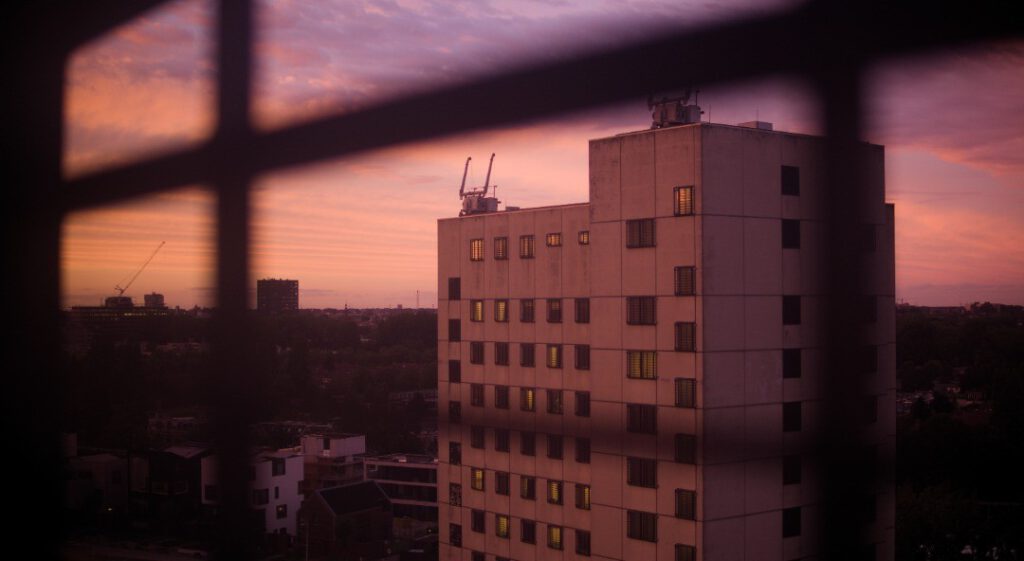
When one door shuts, another opens. After the inmates were removed, asylum seekers and international students took their place to aid them in adjusting to the Dutch way of life.
(What a funny way to do so, but I suppose beggars can’t be choosers.)
How did I, an innocent international student, end up living in a former Dutch prison?
The summer of 2017 rolled around and, alongside thousands of eager students who moved to Amsterdam ready to experience the “best days of their lives,” I began my search for a roof over my head.
Like many international students, countless doors were shut firmly in my face. I always seemed to be about number 100 in the queue for rooms, and on top of that, I also didn’t fit the categorisation of “Dutch speaking only”.
When I was starting to lose all hope, feeling defeated and lost, out of the blue, an email popped up in my inbox.
I clicked it in desperation, crossing my fingers that I hadn’t left it too late, hoping that there was still a spot for me to fill.
READ MORE | Why is there a housing shortage in the Netherlands? The Dutch housing crisis explained
“Now that sounds interesting,” I thought to myself. A hall of residence type accommodation, lots of students piled on top of each other, no privacy, but lots of fun.
Little did we know just what was in store for us.
Sentenced to five months in prison
Upon signing my lease, I discovered I would be confined to a 10m2 cell with a doorless ensuite toilet and windows with bars on them. Yes, bars.
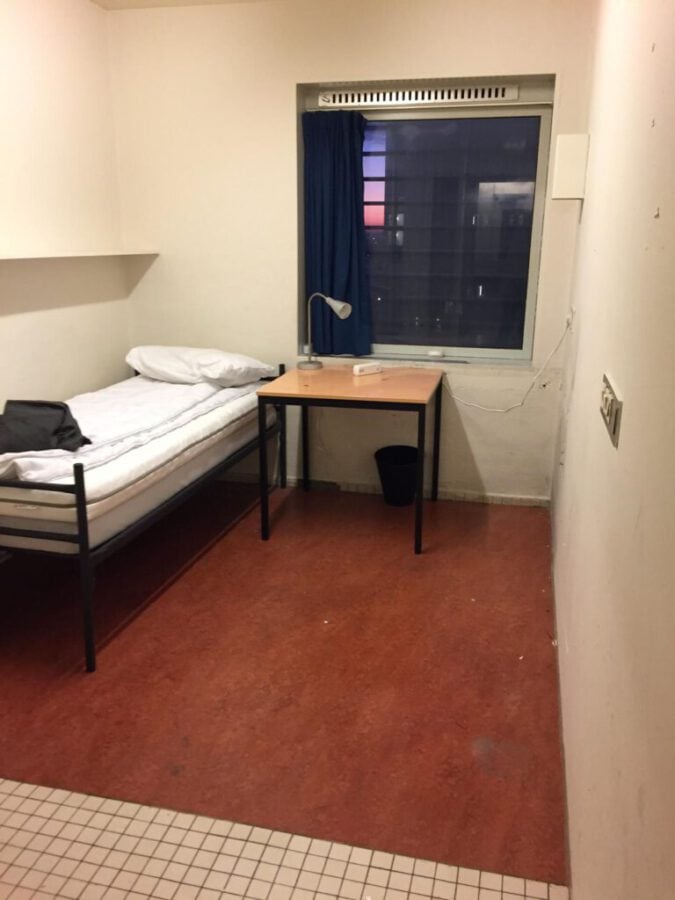
For just €550 per month, including gas, water, and electricity, I would also share two showers and a kitchen with eight other innocent inmates — a bargain for Amsterdam prices.
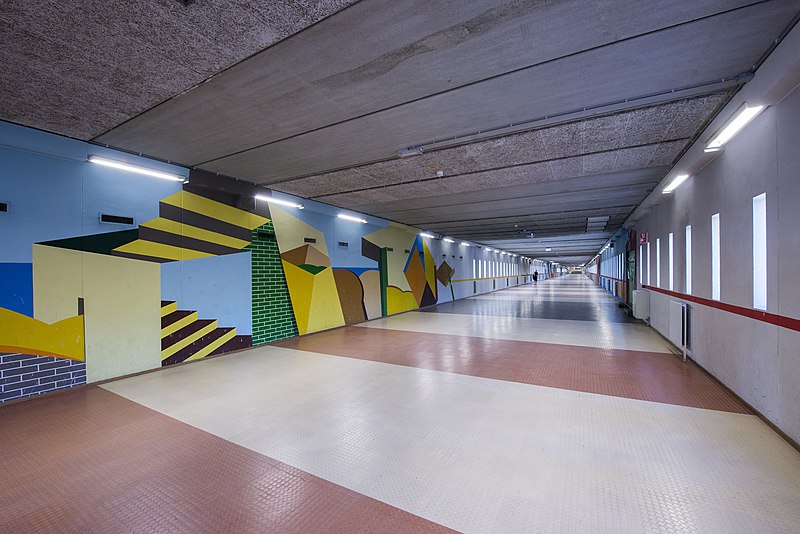
What is it like living in a former prison?
Upon arrival, I was confronted by the 14-storey taunting towers above me, a nervous wreck after moving 10,000 kilometres from my childhood bedroom.
Like inmates, the check-in staff had us line up to be given our keys and instructions for our stay. Thankfully, we could skip the strip search. 😉

But nothing was going to put me off. I was determined living in prison would be an experience like no other I would have in my life, and I felt adrenalised by the prospect that I would be living like a con.
When I look back on the time I served within the walls of Bijlmerbajes, I have many memories that won’t leave me — even if I wanted them to. To name a few…
🚨 Daily fire alarms
Almost every other night, the fire alarms would begin to shriek at 2 AM. The smoke from someone’s joint or someone’s burnt leftovers (the former probably influencing the latter) would set them off.

Surely the smokers were able to open a window? Nope, those were all glued shut — they couldn’t be opened even an inch.
To begin with, for each alarm, we would all dutifully scramble around in the dark, bleary-eyed and head out of our cells to determine whether we should go downstairs in case of a fire.
READ MORE | 11 creative solutions to the Dutch student housing crisis that makes us say “Why didn’t we think of that?”
Eventually, we grew accustomed to the mind-numbing racket and dealt with it. It was an odd lullaby, but it was all part of living at the Bijlmerbajes.
🛠️ Broken lifts
At least three times a week, the lifts taking us to our cells would mysteriously and suddenly halt, leaving us to ascend 12 flights of stairs by foot.
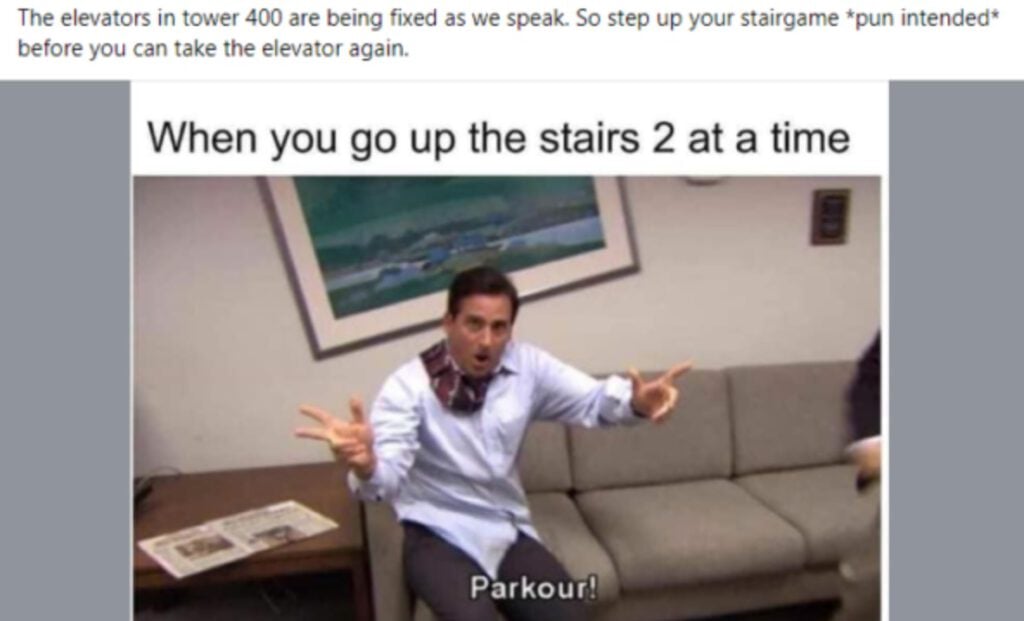
This was actually for the best; each elevator trip up and down consisted of a nerve-wracking series of curious and frightening creaks.
READ MORE | 5 things you didn’t know about the Dutch student housing crisis
The fear created in our souls by each of these trips was only compounded by the etchings on the elevator’s walls, scratched mirrors, and flickering light.
👮♀️ Prison warden
Smoking inside the prison was technically banned. Instead, the smokers were supposed to make their way to the bottom floor, where there was a courtyard surrounded by high concrete walls.
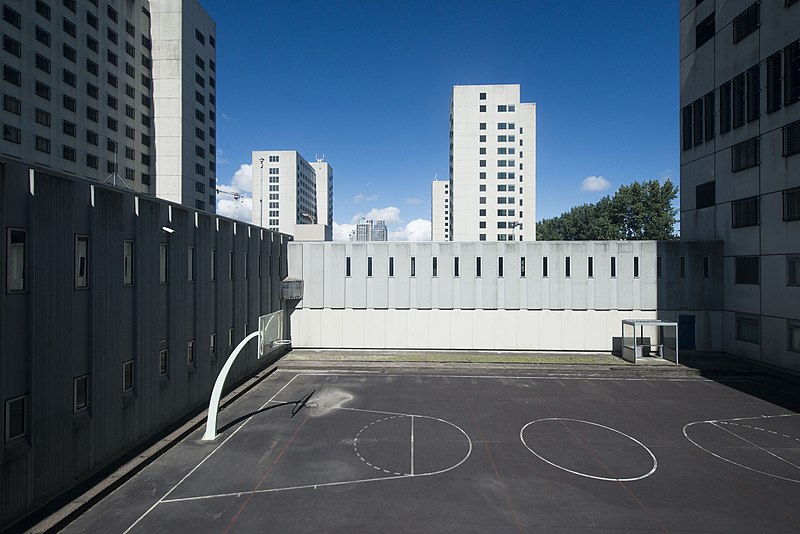
In the beginning, the smokers dutifully made their way downstairs. However, after a few months, laziness got the better of them, and they began smoking in the stairwell where the windows opened.
If the smokers were caught, the prison wardens, who called themselves resident assistants, would slap the smokers with a hefty €30 fine.

It became a kind of cat-and-mouse chase between the two. The smokers had their ears pricked just quick enough to race away from the wardens, who would slink up the stairs silently.
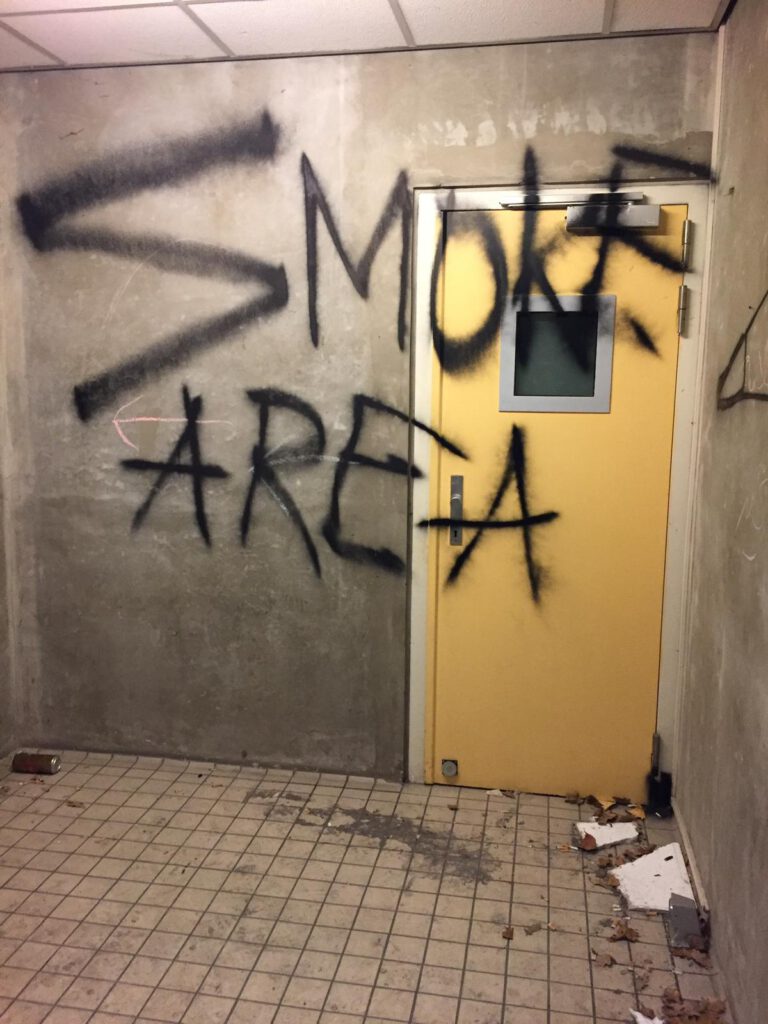
🚿 Freezing showers
I know what you’re thinking: “I hope you didn’t drop the soap!”

Thankfully, the Bijlmerbajes showers were made into cubicles, so we weren’t welcomed by any sorry sights when we entered.
On the other hand, the cubicle walls didn’t reach the floor — so you could tell which one of your fellow inmates was in there by the look of their feet.
And that didn’t stop some of them from striking up a conversation on the other side of the wall as you tried to bury your squeals caused by the freezing water gushing from the ceiling hole.
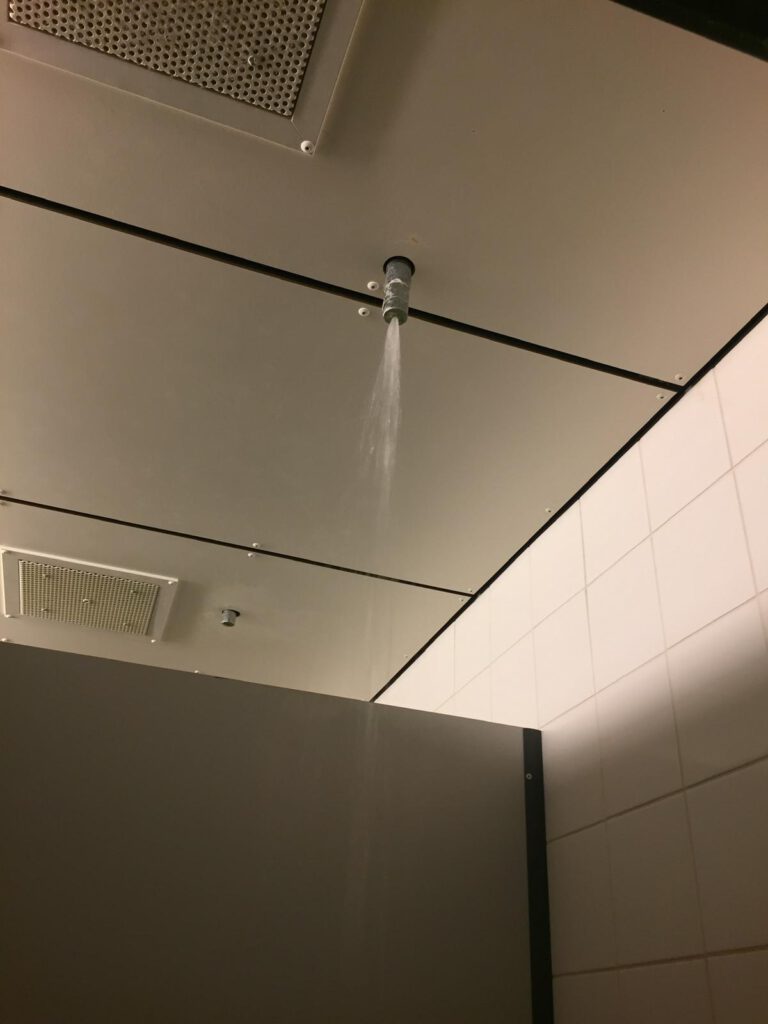
Finally freed
By the end of the five months, I felt sad to leave. I had formed lasting friendships made stronger by such a bizarre experience.
Although many things could’ve been improved, like the hot showers, for example, we made the most of our sentences.

We all had to make the best out of a bad situation, and the fun we had together far outweighed having to walk up 12 flights of stairs daily.
I’d probably do it once more — but that’d be it.
Like many, I definitely felt the wrath of the Dutch housing crisis in full force, but living in Bijlmerbajes was a humbling experience I hold dearly.
After all, who can say they spent time behind bars without having a criminal record to their name?
The Bijlmerbajes today
In 2018, the Bijlmerbajes slid its gates shut for the final time before it was demolished completely.
After housing prisoners, asylum seekers, and international students, the former penitentiary is now being reborn into luscious, architecturally-designed gardens and condos.
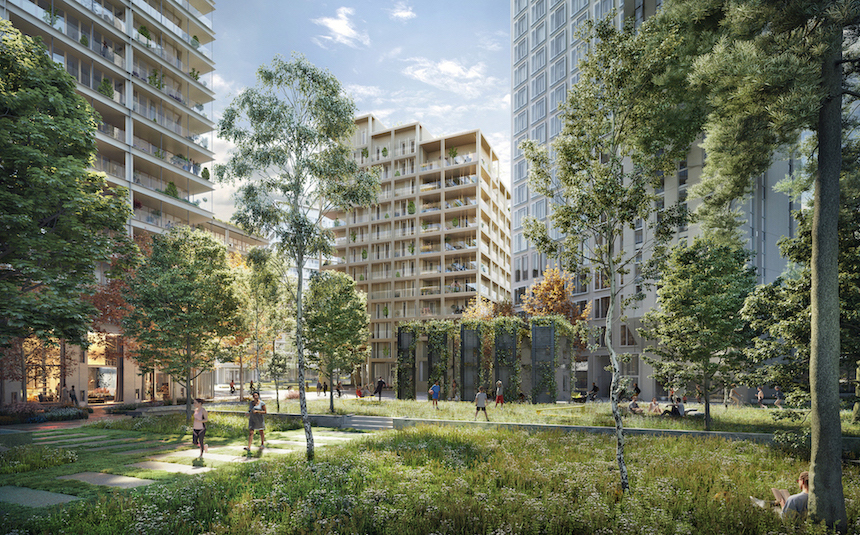
The rubble from its demolition is transforming into a green, sustainable neighbourhood with around 1,350 homes, a fresh market, a health centre, and many more facilities.
By 2026, the Bajeskwartier is expected to be up and running at full steam. But don’t worry — we former Bijlmerbajes residents will hold our memories under lock and key.
Would you spend a night in an abandoned former prison? Tell us in the comments below!
Feature Image: ErikSW/Wikimedia Commons/CC4.0 (Modified) and Eva Gabriella

What a lovely amusingly written article. The author so drew me in to her unusually positive “incarceration” that I was most sad to read of the former prison’s demolition.